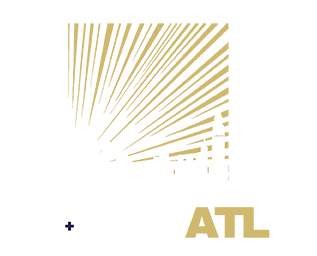Car accidents are prevalent in the U.S. – it records the most road crash deaths,…
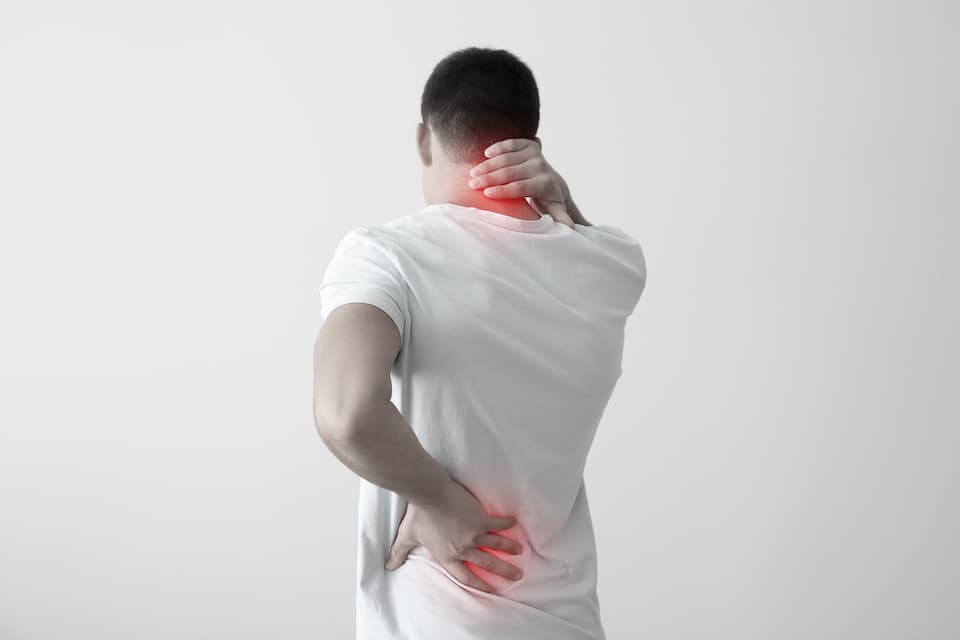
Thousands of Atlanta residents are involved in car accidents each year, and many of them suffer debilitating back and neck injuries. If you have hurt your back or neck in a traffic accident caused by another road user’s negligent actions, you may be thinking about taking legal action.
In this article, highly experienced car accident attorney Nathan Fitzpatrick discusses the possible long-term consequences of common spinal cord injuries and covers the legal options available to car accident victims.
The Impact of Car Accidents on the Neck and Back
When a motor vehicle collides with an object, the people inside it continue to move until a safety feature like a seat belt or airbag or an object like a dashboard or steering wheel arrests their forward motion. Once their forward movement has stopped, vehicle occupants are thrown forcefully backward. It is this forward and backward motion that causes most auto accident back and neck injuries.
Importance of Seeking Medical and Legal Assistance
It is important to seek medical treatment and legal assistance after a car accident, even if you feel fine. Neck and back pain after a car accident isn't always felt right away. That's because the body releases adrenaline into the bloodstream during a crash, which increases pain tolerance, so you may not realize how badly you have been hurt.
When spine injuries are not treated promptly, progressive diseases such as spinal stenosis and degenerative spinal disorders can develop.
Speaking to an experienced personal injury attorney after a crash could help you to avoid common mistakes that make it more difficult to recover compensation from negligent drivers or their insurance companies. These mistakes include not seeking medical attention, failing to keep accurate records of doctor visits and missed work, and accepting the first offer an insurance company makes.
Understanding Neck and Back Pain
The degree of neck and back pain you experience after a car accident can be greatly influenced by your position during the collision and the severity of the impact that caused your body to jolt forward and backward. When seated in an awkward position or involved in a high-speed crash, the muscles, ligaments, and discs of your spinal cord are subjected to intense forces. This exposure can result in swelling, stretching, and pain.
Furthermore, during the crash, the blunt force propels your body until you collide with an object, such as your seat belt, dashboard, or car door, halting the movement. This abrupt stop imposes enormous pressure on your neck and back, potentially leading to severe back pain.
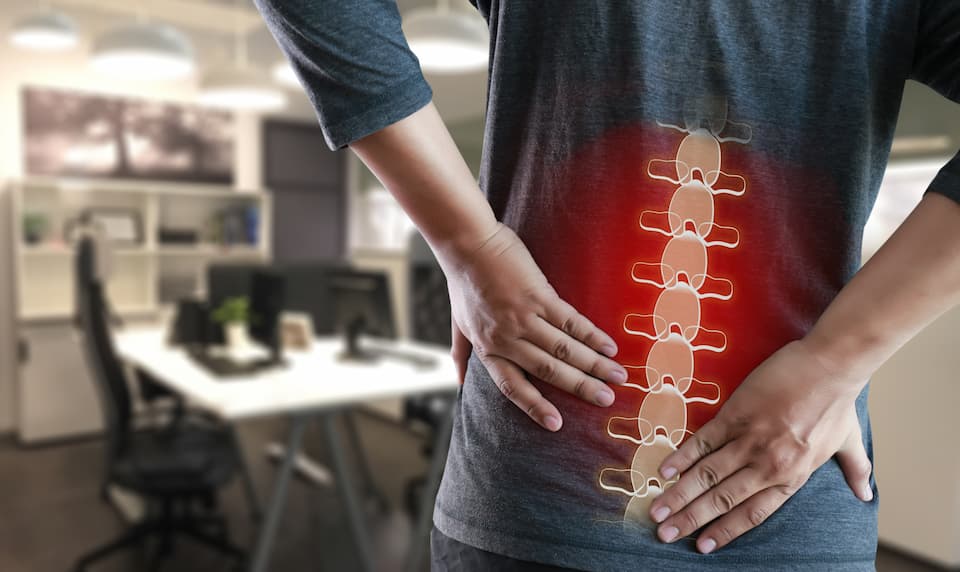
Anatomy of the Neck and Back
The spinal cord runs from the base of the skull to the pelvis, and the most serious back injuries and neck injuries involve the spinal cord. The spinal cord is divided into the following five areas:
- The cervical spine: The cervical spine is made up of the seven vertebrae that run from the skull to the upper back, and it supports the head and protects the nerves that run from the brain.
- The thoracic spine: The thoracic spine is the largest part of the spinal column. It forms the middle back and is composed of 12 vertebrae.
- The lumbar spine: This part of the spine is usually called the lower back. The five vertebrae of the lumbar spine support most of the body’s weight.
- The sacrum: The five vertebrae at the base of the spine are called the sacrum. These vertebrae are fused together to provide more support.
- The coccyx: The lowest part of the spinal column is made up of four fused vertebrae. The coccyx is often called the “tailbone.”
Common Types of Neck and Back Injuries in Car Accidents
Neck and back injuries suffered in motor vehicle accidents range from minor strains that cause moderate pain and stiffness to catastrophic fractures that result in partial to total paralysis. Three of the most common car accident-related neck and back injuries are whiplash, herniated discs, spinal fractures, and facet joint injuries.
Whiplash
Whiplash is one of the most common car accident injuries. This back and neck injury primarily affects the soft tissues in the neck and upper back, often leading to a broad range of physical symptoms and discomfort. It occurs when the head is jerked violently forward and backward in quick succession, a scenario that is frequently seen in car accidents due to abrupt stops or collisions.
Despite the protective capabilities of seat belts, they aren't designed to fully mitigate the forces that result in whiplash. This means that even in a relatively low-impact accident, occupants can still sustain significant whiplash injuries.
Upon the occurrence of whiplash, the muscles, nerves, and tendons in the neck are forcibly stretched beyond their usual range of motion. This overextension can lead to microscopic tears in the tissues, causing inflammation and resulting in a host of symptoms.
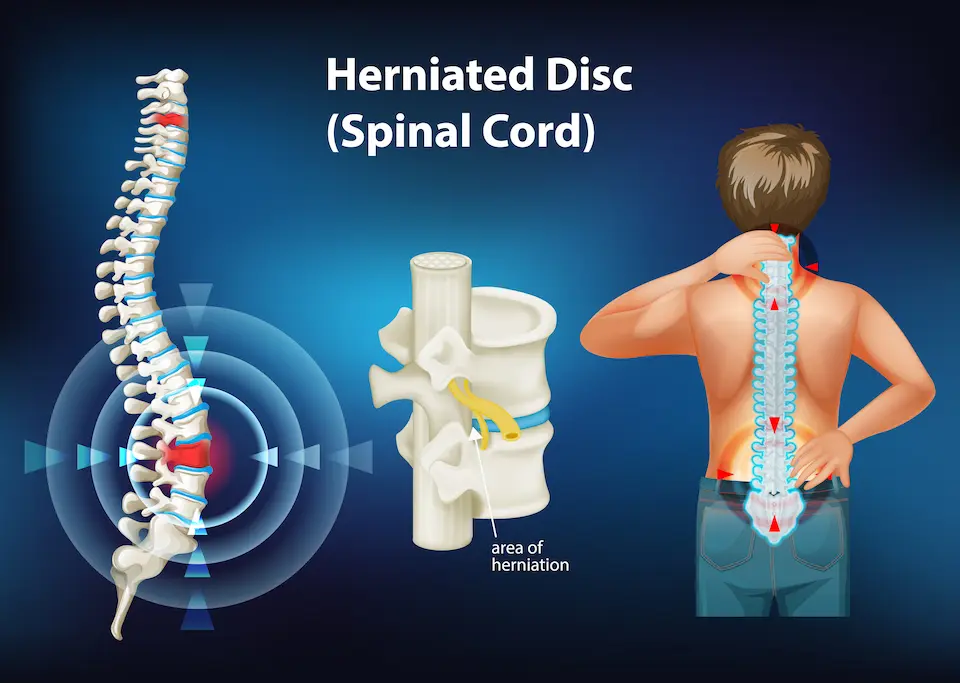
Herniated Discs
Herniated discs, common types of back injuries, are often experienced in car accidents. The spine is equipped with small discs situated between each vertebra that function like shock absorbers, preventing injuries. These discs are constructed of a tough fibrous outer layer and a soft, jelly-like core.
When exposed to the intense forces of a car accident, these discs can rupture, leading to a herniated disc. In such instances, the jelly-like nucleus protrudes into the spinal canal.
A disc herniation can put pressure on surrounding nerves, causing intense pain or numbness of the extremities. The pain and numbness can make even the simplest movements nearly impossible. As such, a herniated disc, apart from being painful, can significantly impede normal movement and daily activities.
Spinal Fractures
Fractures of the thoracic and lumbar spine represent some of the most severe back injuries endured by victims of car accidents. These injuries can significantly impact the spinal cord, potentially leading to debilitating consequences. While some spinal fractures might respond positively to treatment, others might result in total or partial paralysis – a life-changing outcome indicative of a serious spinal cord injury.
Spinal fractures are diverse in their type and severity. Flexion or distraction fractures, however, stand out as the injuries most frequently sustained in automobile accidents. Characterized by the forcible stretching or pulling apart of the vertebrae, these fractures occur when the upper body is jerked in motion while the pelvis remains secured by a seatbelt.
Such back injuries are aptly named distraction injuries, as they cause a pulling apart or 'distraction' of the spinal elements. The abrupt differential movement can produce a devastating impact on the spinal cord, leading to potential damage that might extend beyond immediate physical trauma.
Whether it's the onset of chronic pain, the requirement for long-term treatment, or the challenging journey of rehabilitation, the repercussions of a spinal cord injury resulting from a distraction fracture can be long-lasting and profound. Therefore, understanding the severity of spinal fractures and their potential implications for the spinal cord is critical in managing and navigating the aftermath of car accidents.
Spinal Stenosis
Spinal stenosis is another serious condition that can either be a direct result of a car accident or may be aggravated by one. This condition is characterized by the narrowing of the spaces within your spine, which can put pressure on the nerves that travel through it. When involved in a car accident, the violent jarring and impact can exacerbate pre-existing spinal stenosis or potentially lead to its onset in severe cases.
Spinal stenosis primarily affects the neck and lower back. The symptoms can vary, with some people experiencing no symptoms at all. However, in more severe cases, individuals may experience dull or sharp pain, numbness, muscle weakness, and problems with bladder or bowel function. In a car accident, these symptoms may be intensified due to the sudden impact, increasing the discomfort and potential impairment for the individual.
When it comes to treating spinal stenosis, the approach largely depends on the severity of symptoms and whether the condition was pre-existing or caused by the accident. Treatment might range from medication and physical therapy to more invasive methods like surgery. It's important to remember that if you have spinal stenosis, whether pre-existing or due to an accident, the condition can significantly impact your life and may necessitate ongoing treatment and adjustments to your daily activities.
Facet Joint Injuries
In addition to whiplash, herniated discs, and spinal fractures, facet joint injuries are another common consequence of car accidents. These specific back injuries specifically impact the facet joints, which are pairs of small joints located between and behind adjacent vertebrae in the spine. These injuries can lead to significant pain and restricted motion, along with neck or shoulder pain, thereby severely affecting the quality of life of the affected individuals.
Car accidents often induce a violent jarring of the body, causing excessive stress and potential damage to the facet joints. The rapid and forceful movements during a collision can result in strains, sprains, or even fractures of these joints. When the facet joint injuries are severe, they can lead to chronic pain and mobility issues, necessitating ongoing treatment and possibly even surgical intervention.
Symptoms of facet joint injuries can sometimes be mistaken for other types of injuries due to their similar presentation, such as neck or back pain, muscle tension, and restricted motion. Therefore, it's crucial to have a comprehensive medical examination following an accident to accurately diagnose any facet joint injuries and develop an appropriate treatment plan.
Symptoms and Signs of Neck and Spinal Cord Injuries
Serious injuries like spinal fractures present symptoms immediately, but less severe injuries like whiplash may not cause pain or stiffness for hours or even days. When symptoms do appear, they are often ignored because people expect to feel discomfort after being involved in a vehicle collision. This is why it is so important to go to a medical care facility after a serious car accident. Neck and back injuries can become more serious if they are not treated promptly, and the spinal cord injuries they cause can become permanent.
Neck Stiffness and Chronic Pain
Even minor injuries to the spinal column can cause chronic pain and extreme stiffness. This pain is not always noticed in the immediate aftermath of car wrecks because of the numbing effect of the adrenaline the body releases in fight-or-flight situations. Whiplash, one of the most common car accident injuries, can cause significant neck stiffness and debilitating, lasting pain. This is due to the overextension and microscopic tearing of muscles and tendons in the neck. Torn or stretched muscles and ligaments can take weeks or months to heal fully, so auto accident-related neck and back pain can persist for some time.
Limited Range of Motion
Auto accident injuries like whiplash and herniated discs can greatly impede motion and mobility. This can be caused by either tissue damage or swelling that places pressure on the nerves that run down the spinal column. In the case of whiplash, the resulting stiffness and pain can often extend into the upper back and shoulders, further restricting mobility. Discomfort is normally treated with painkilling drugs or muscle relaxants, but prolonged physical therapy may be required to restore full movement.

Radiating Pain or Numbness
If you suffer a neck or back injury in an auto collision, you may experience radiating pain that moves from the injury site to other parts of your body, such as the shoulders or arms. This effect can be due to conditions like a pinched nerve or cervical radiculopathy, which are common consequences of back injuries. These conditions occur when nerves in the spinal area, particularly the cervical spine, are exposed to irritation or pressure, often due to disc herniation caused by the back injury.
A back injury from auto accidents can also result in cases of whiplash, leading to tingling or numb sensations in the arms or hands. This is often due to the nerve compression or irritation caused by the back injury. If you have whiplash, you may experience pain not just in the neck (cervical spine) but also in the upper back (thoracic spine) or lower back (lumbar spine), further indicating the extensive impact of a back injury.
The effects of a back injury from a car collision can vary significantly from person to person. Pinched nerves, often resulting from back injuries, are usually treated with drugs and physical therapy, while whiplash may require a different approach. The diversity in these treatments speaks to the complex nature of neck and back injuries resulting from auto accidents. Therefore, seeking immediate medical attention following a back injury is essential, as it helps mitigate long-term effects and accelerates the healing process.
Degenerative Spinal Disorders
A traumatic back injury can potentially lead to the development of degenerative disc disease in the future, sometimes months or years after the initial trauma. Furthermore, such an injury can expedite the progression of previously undetected health problems. As your body goes through the natural aging process, the combination of prior damage and natural degeneration can manifest in conditions such as bulging discs.
Muscle Spasms
Following a car wreck, muscle spasms can occur as a response to an injury to the spine or muscles. A back injury or neck injury can trigger these spasms as the body's natural reaction to protect the area from further harm. They involve sudden, involuntary contractions of a muscle or muscle group and can cause significant pain and discomfort.
Muscle spasms in the neck or back are often the body's response to structural problems in the spine. For instance, if an auto accident leads to a herniated disc, the resulting irritation and inflammation can provoke a spasm. Similarly, a back injury from a fall or sudden jolt can precipitate muscle spasms.
Moreover, they can exacerbate the effects of a back injury. The contracted muscles can put additional strain on the spine, potentially worsening an existing injury. Furthermore, persistent muscle spasms can lead to chronic pain and limited mobility, making daily activities challenging and contributing to a decreased quality of life.
Sometimes, individuals may experience muscle spasms long after the initial back injury has healed. This is known as chronic post-traumatic muscle spasm, which could be due to the injury having disrupted the nerves that control muscle movements. This condition is usually managed with a combination of medication, physical therapy, and sometimes surgery.
Seeking Medical Help for Neck and Back Pain
If you are a car accident victim, you should be evaluated by a medical professional, even if you were involved in a minor collision and seem to have escaped unscathed. When victims of car wrecks are not hurt or suffer only minor injuries, emergency medical technicians can perform basic checks at accident scenes and determine whether a trip to a nearby emergency room is warranted. When injuries are obvious, paramedics will transport victims to a hospital or trauma center.
When Should I Go to the Doctor For Neck Pain After a Car Accident?
Experiencing neck pain after a car accident is a common occurrence and could be a sign of a significant back or neck injury. Therefore, it is crucial to seek medical treatment promptly if you experience any pain or stiffness in your neck or back following a car accident. That course of action holds true, even if you are experiencing mild pain or no pain at all.
Neck injuries or spinal cord injuries can become more serious if they are not treated promptly. The pain you feel might not always indicate a severe injury, but a medical professional should always evaluate it. This is especially true in the case of neck injuries, as these can often be more serious than they initially appear.
Even if the neck pain seems mild, it could be a symptom of a more serious condition such as whiplash or a herniated disc, both of which can result from neck injuries sustained in auto collisions. These conditions can lead to chronic pain or other long-term health issues if not diagnosed and treated properly.
Therefore, regardless of the perceived severity of your neck pain following a car accident, it's important to consult with a doctor to rule out any serious neck injuries. Remember, it's always better to err on the side of caution when it comes to potential neck injuries and your health.
Diagnostic Tests and Imaging
Doctors sometimes have to run several diagnostic tests to determine the severity of back and neck injuries. X-rays can reveal whether or not vertebrae have been fractured, but MRI or CT scans may be needed to identify soft tissue damage like ruptured discs or strained or torn ligaments or muscles.
X-rays
X-rays are a kind of electromagnetic radiation that passes through solid objects like the human body. When medical X-rays are taken, the patient is placed between an X-ray detector and an X-ray source. Bones show up clearly on X-rays because they contain calcium, which absorbs electromagnetic radiation. Other types of tissue containing little calcium are displayed in various shades of gray on an X-ray.
MRI Scans
Magnetic resonance imaging uses computer-generated radio waves and a powerful magnetic field to produce images of the human body. These images are extremely detailed and created in full color. When a patient is given an MRI scan, the magnetic field temporarily rearranges the water molecules in the body. Radio waves then cause these realigned molecules to produce faint signals, and these signals are used to create cross-sectional images.
CT Scans
A Computed tomography scan is basically an X-ray that has been enhanced by computer technology. Only bones are clearly visible on X-rays, but CT scans provide detailed images of blood vessels, organs, muscles, and fat. X-ray equipment sends a beam of energy to the area being studied. CT beams move in a circular motion to scan a larger area of the body. The scanned data is then sent to a computer, where it is used to create two or three-dimensional images.
Common Treatment Options
Surgery may be required to treat spinal cord fractures or herniated discs, but most back and neck injuries sustained in car crashes respond well to medication, rest, and rehabilitation therapy. There are also alternative medical approaches like chiropractic care that can align the spine and ease pain and stiffness in the neck and back.
Medications and Pain Management
Doctors prescribe several different kinds of medications to treat back and neck pain and swelling. Accident victims who find coping with their injuries emotionally taxing may also be prescribed sedatives or antidepressants. The most common drugs used to treat injuries to the spinal column include:
- NSAIDs: Over-the-counter Nonsteroidal anti-inflammatory drugs like Motrin or Advil can effectively treat minor pain, but you should read warning labels carefully as taking too many of these drugs can cause side effects.
- Narcotics: More debilitating neck and back pain are treated with powerful opioid drugs like oxycodone or fentanyl. These medications are highly addictive, so they should only be taken for a short time and under a doctor’s direction.
- Topical treatments: Creams, ointments, and salves that contain pain-relieving ingredients and are rubbed directly onto the skin are sometimes prescribed for neck and back injuries.
- Muscle relaxants: These drugs can help victims of car crashes recover from whiplash injuries, but they should not be taken before driving or using machinery as they can cause drowsiness and dizziness.
- Antidepressants: Drugs like duloxetine and tricyclic antidepressants are sometimes prescribed to help car wreck victims to cope with mental stress. These drugs can also relieve back pain.
Physical Therapy and Rehabilitation
Physical rehabilitation specialists can help victims of auto collisions regain strength in their neck and back muscles and improve their flexibility. These specialists also provide advice about modifying daily activities to prevent further injury. Pain and stiffness often diminish before full strength and flexibility have been restored. Therefore, it is important to keep performing these exercises even when injuries seem to have healed.
Chiropractic Care and Alternative Therapies
Chiropractors use small instruments or their hands to apply a sudden but controlled force to vertebrae. The goal of chiropractic adjustment, or spinal manipulation as it is sometimes called, is improving motion and relieving discomfort. Chiropractors often treat whiplash injuries, and several sessions may be required to restore a full range of motion.
Dealing with Insurance Companies
You will almost certainly have to deal with an insurance company if you are involved in a car accident in Georgia. State law requires motorists to carry liability insurance, and this coverage pays most auto accident claims.
Notifying Your Insurance Provider
You should notify your insurance provider if you are involved in a car crash, even if the other driver was at fault. Georgia is not a no-fault state, which means the insurance companies of both drivers involved in an accident will examine the facts to determine who was to blame.
Gathering and Documenting Evidence
Insurance companies try to pay as little as possible to settle car accident claims, so you should strengthen your negotiating position by gathering as much evidence as you can. Take photographs of the vehicles involved before they are moved or towed away, and make sure your images show what the road and weather conditions were like.
Medical Reports and Bills
Insurance companies sometimes attempt to reduce compensation by claiming that injuries were preexisting and not caused by an auto accident. To prevent this from happening, you should seek medical attention immediately and keep detailed records of all of your doctor and hospital visits.
Accident Reports
Georgia law requires motorists to report accidents that result in injury or death or cause more than $500 in property damage. This is a good thing because police reports are powerful pieces of evidence. They do not always provide the cause of an accident or place blame, but they do include the insurance information of each of the drivers involved and the names and contact details of any eyewitnesses.
Eyewitness Testimonies
In the moments following a car crash, you should check the area for witnesses and security or traffic cameras. Police officers and insurance adjusters tend to find impartial eyewitnesses more reliable than drivers who have been involved in accidents, and video footage of the events unfolding provides definitive evidence.
Communicating With the Insurance Adjuster
An insurance adjuster is paid to protect their employer’s bottom line. When you enter into auto accident compensation discussions, you should not believe the adjuster is on your side even if they represent your insurance carrier. These individuals are skilled professionals, and they are trained to gather information or elicit statements that reduce compensation for victims of car accidents.
Dos and Don'ts
You will find it easier to deal with insurance adjusters if you provide them with accurate information, doctor and hospital bills, police reports, and photographs, but you should decline if you are asked to sign a medical records release. Providing an insurance adjuster with access to your complete medical history could complicate your claim if you have previous injuries or take medications that cause drowsiness. You should also be skeptical of quick settlement offers, and you should never admit fault.
Importance of Legal Representation
When you are dealing with an experienced professional like an insurance adjuster, it is wise to have an equally experienced individual advocating on your behalf. Attorneys have a fiduciary duty, which means they are obligated to act in their client’s best interests at all times. If you go into car accident compensation talks with an experienced personal injury attorney, your interests will be protected by a professional who knows what to expect and has produced results in the past.
Understanding Insurance Coverage and Compensation
Car insurance policies include two basic types of coverage. Bodily injury coverage compensates accident victims for their medical bills and lost income, and property damage coverage pays auto repair costs. Drivers in Georgia are required to maintain bodily injury coverage of $25,000 per person and $50,000 per accident and property damage coverage of $25,000 per accident. You should bear in mind that this is the mandated minimum coverage, and many drivers choose policies with far higher limits.
The Role of a Car Accident Lawyer
A personal injury attorney’s objective is to obtain the best possible outcomes for his or her clients. To achieve this aim, attorneys must be tenacious and use their experience. Insurance companies have adjusters representing them in compensation negotiations, and car collision victims should have experienced attorneys looking out for their interests.
When to Consult a Car Accident Lawyer
Statements and admissions that have been made cannot be taken back, which is why a personal injury attorney should be consulted before negotiations with an insurance company begin. Going into these discussions with an experienced attorney also sends the insurance company involved the clear message that a professional approach is being taken and settlement offers should be serious.
Benefits of Hiring a Car Accident Lawyer
If you have a personal injury attorney by your side when you go into negotiations with an insurance company, you will not have to worry about being talked into accepting less compensation than you are entitled to. Attorneys have a duty to obtain the most compensation they can for their clients, and they can take car accident cases to court if the offers they receive are unsatisfactory.
Legal Expertise and Knowledge
Before attorneys are licensed to practice law in Georgia, they must take and pass the state’s extremely challenging bar examination. This means that attorneys understand tort law and are familiar with legislation that deals with car accident cases and negligence claims.
Negotiating Fair Settlements
Auto accident settlement negotiations may be concluded more quickly when a personal injury attorney is involved because the insurance adjuster will understand that making a lowball offer will probably be a waste of time. When both sides realize that a fair settlement is inevitable, the back-and-forth offer and counteroffer process could be completed in hours instead of days.
Litigation and Court Representation
When negotiations with an insurance company are unproductive or a negligent driver’s auto insurance coverage is insufficient, resolving car accident claims may require litigation. Insurance companies go into court with experienced lawyers, so car wreck victims hoping for a successful outcome should be just as well represented.
Finding the Right Car Accident Lawyer
Personal injury attorneys all claim to provide excellent service, so finding one that actually does can be difficult. When you visit attorney websites to gather information, you should pay close attention to the testimonials left by previous clients. If these reviews are recent and accompanied by photographs of happy clients, the lawyer probably delivers on his or her promises.
Researching and Gathering Referrals
Before you hire a personal injury attorney, you should find out if they have handled similar cases in the past. If they have, you should ask them how those cases turned out. The Fitzpatrick Firm has recovered millions of dollars for car wreck victims, and our website provides details about some of our most important cases.
Initial Consultations and Evaluating Experience
Most attorneys offer prospective clients a free consultation to discuss their legal options. It is important to ask a lot of questions during an initial consultation because the way they are answered will tell you a lot about the way the lawyer will handle your case and address your concerns.
Fee Structures and Payment Options
During initial consultations, you should ask lawyers about compensation payment options. Personal injury awards are not usually taxed, but they are expected to cover an accident victim’s long-term medical costs and other expenses. This does not always work out in practice when compensation is paid in a lump sum, so a structured settlement could make more sense.
Contact The Fitzpatrick Firm For Complementary Neck and Back Pain After a Car Accident Case Review
In the unfortunate event that you suffer injuries caused by another party's negligence during an accident in Atlanta, there are provisions that allow you to claim compensation. This remuneration is designed to mitigate the financial strain of the damages resulting from the accident.
Remuneration covers a wide spectrum of costs, most notably medical expenses associated with treating the injuries caused by the accident. Additionally, it extends to other tangible damages like the expenses required for vehicle repairs, further alleviating the financial burden imposed by the accident.
You can schedule a free case assessment with the Fitzpatrick Firm by calling us at (678) 607-5550 or filling out our form below. Our phones are answered 24 hours a day, and emails we receive are responded to within 24 hours. We look forward to meeting you!
